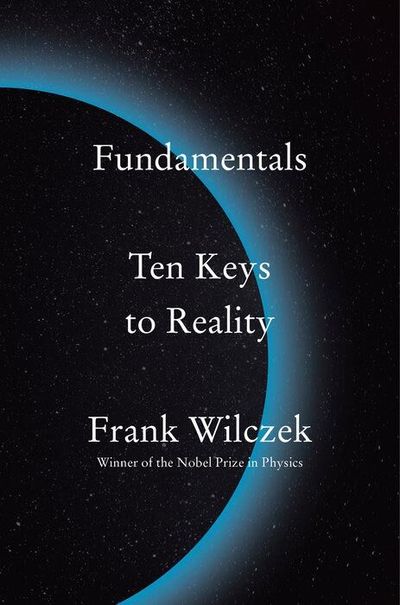Book review: Explaining the nature of reality, a theoretical physicist gets down to the basics

During the seemingly endless hours of coronavirus isolation, many are pursuing new educational experiences – trying out a musical instrument or finally picking up that brush to learn the art of painting.
For those with more scientific yearnings, and who regret not taking a few courses in college to learn about the physical world, theoretical physicist Frank Wilczek offers a way to catch up. His latest book, “Fundamentals: Ten Keys to Reality,” attempts, according to the author, “to convey the central messages of modern physics as simply as possible.”
With his clear and joyful voice, Wilczek succeeds very well and for good reason: Your guide is a Nobel laureate who has solved several problems in modern physics, including how the strong nuclear force operates.
He even hypothesized new elementary particles along the way (one a candidate for the mysterious dark matter that fills the universe).
There is no calculus required; this is not Physics 101. Instead, Wilczek talks about modern physics and cosmology from a more broad brush and philosophical perspective, often linking their findings to the real world.
In this age of rising skepticism, he wants his readers – whom he imagines to be lawyers, doctors, artists, parents or simply curious people – to be “born again, in the way of science.”
That approach, of course, was launched with the scientific revolution of the 16th and 17th centuries. Galileo and Johannes Kepler, two of its earliest pioneers, began measuring the world precisely. Isaac Newton then translated those findings into mathematical laws.
To Wilczek the core lesson for scientists is learning to ask, “What happens next?” Once you find behaviors that are repeatable and universal – through experimentation – you have found the laws of nature. “The fact that the physical world we presently inhabit appears to obey them,” writes Wilczek, “is an astonishing discovery.” He points out that “babies – even animal babies – use that same experimental strategy to get in tune with physical reality.”
And that physical reality can be summed up in three words: space, time and matter. The author imparts a wondrous sense of the vastness of space and how we measure it and reminds us that we have more atoms in our body – 10 octillion – than the number of stars in the visible cosmos. “A universe,” he poetically notes, “dwells within us.”
The book focuses primarily on the particles that make up that universe and the forces they impart, not surprising given Wilczek’s area of specialty. Physicist Richard Feynman once pondered the one sentence he would pass on to future generations should all scientific knowledge be destroyed. He decided it would be: “All things are made of atoms.” Or as Wilczek clarifies, “All things are made of elementary particles.”
Understanding how those particles originated is one of the triumphs of modern physics. One might say it began in the 19th century with Michael Faraday, who visualized electrical and magnetic bodies extending an “influence through space, as a sort of aura or atmosphere.”
It was these “fields” that transmitted the force at work. This notion inspired James Clerk Maxwell to codify Faraday’s image in a monumental law of electromagnetism. In solving his law’s equations, Maxwell discovered that light was simply a disturbance propagating through the electromagnetic field.
Wilczek beautifully shows how physicists expanded this vision over the decades to cover the other forces of nature: gravity, the strong nuclear force and the weak nuclear force. “We now understand particles as manifestations of a deeper, fuller reality,” he writes. “Particles are avatars of fields.”Each known particle is an excitation within its own field, the way a photon is an excitation of the electromagnetic field.
There are a few bumps in the prose. Wilczek includes physics jargon (“asymptotic freedom,” “color charge”) that might be difficult for a newcomer to understand, and other concepts (gravity as space-time bending) need more extended explanations. But for the most part, the author strikes a nice Goldilocksian balance between simplicity and comprehension.
While this book is aimed at novices, those familiar with modern physics can still enjoy reading how a theoretical physicist thinks about the basics. Wilczek points out that the resemblance of quantum mechanics, the physics of the submicroscopic world, “to the equations that arise in music is uncanny.” We learn that we are largely composed of energy – most of the mass of the protons and neutrons in our bodies comes not from their constituent parts, called quarks, but from the energy of the quarks’ restless movements, according to E = mc2.
Wilczek goes on to show how a complex world can arise from the few ingredients and forces available to us. “The world is like a tree,” he writes, “that, following simple rules of growth, sprouts many branches, each different in details, providing suitable homes for different birds and insects.”
At the close of the book, Wilczek digs deeper into the meaning behind the fundamentals he has conveyed. He confesses that in his teenage years, art, literature and philosophy seemed silly to him once he had eaten fruit from the scientific “Tree of Knowledge.”
But he now realizes that outlook was far too restrictive, and he offers succor to those who deny science or who are uneasy at its abandonment of faith: “Science tells us many important things about how things are, but it does not pronounce how things should be, nor forbid us from imagining things that are not. Science contains beautiful ideas, but it does not exhaust beauty.”
Marcia Bartusiak is professor of the practice emeritus in the MIT Graduate Program in Science Writing and the author of seven books on the frontiers and history of astrophysics.